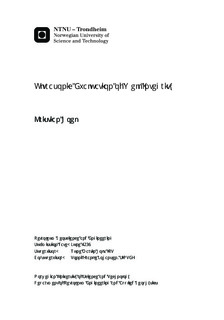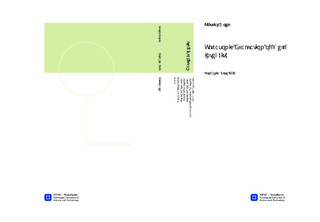| dc.contributor.advisor | Holt, Rune Martin | nb_NO |
| dc.contributor.advisor | Franke Johansen, Tonni | nb_NO |
| dc.contributor.author | Hoel, Kristian | nb_NO |
| dc.date.accessioned | 2014-12-19T12:18:46Z | |
| dc.date.available | 2014-12-19T12:18:46Z | |
| dc.date.created | 2014-09-13 | nb_NO |
| dc.date.issued | 2014 | nb_NO |
| dc.identifier | 746629 | nb_NO |
| dc.identifier | ntnudaim:11108 | nb_NO |
| dc.identifier.uri | http://hdl.handle.net/11250/240494 | |
| dc.description.abstract | This thesis presents the acoustic theory behind current ultrasonic cement evaluation tools. The UltraSonic Imager tool's pulse echo technique and the new Isolation Scanner tool's pitch-catch leaky lamb wave measuring technique is explained. A laboratory experiment is conducted on a steel casing set-up (BeCaLoS) designed by SINTEF Petroleum Research to test, and highlight weaknesses of these measuring techniques. Both evaluation methods are successfully performed under four different conditions; with air, water, mud and cement behind the steel casing. Pulse-echo wave resonance attenuation measurements prove to be successful in evaluating the physical state of the material behind the casing. Interference from the third interface echo in the resonance waveform gives good annulus thickness information. Calculated cement impedance values indicate the presence of a microannuls.The pitch-catch plate wave attenuation measurements prove the evaluation method's weakness to thick casings. Lamb wave mode analysis is done and shows a possible mix of higher-order lamb modes present in the plate wave. Annulus material with high acoustic attenuation gave values that were difficult to interpret. The cement measurements showed low attenuation values caused by cement impedance above critical values; illustrating the importance of using both pulse-echo and pitch-catch to determine well integrity conditions. Third interface echoes were recorded successfully and gave a pretty accurate annulus thickness value. A question was raised to whether the amplitude of the initial flexural wave can be used to give information on annulus condition.The need for cement evaluation will greatly increase in the near future, and the limitations of current tools are a cause for concern and further research in the field of cement evaluation is encouraged. | nb_NO |
| dc.language | eng | nb_NO |
| dc.publisher | Institutt for petroleumsteknologi og anvendt geofysikk | nb_NO |
| dc.title | Ultrasonic Evaluation of Well Integrity | nb_NO |
| dc.type | Master thesis | nb_NO |
| dc.source.pagenumber | 77 | nb_NO |
| dc.contributor.department | Norges teknisk-naturvitenskapelige universitet, Fakultet for ingeniørvitenskap og teknologi, Institutt for petroleumsteknologi og anvendt geofysikk | nb_NO |

